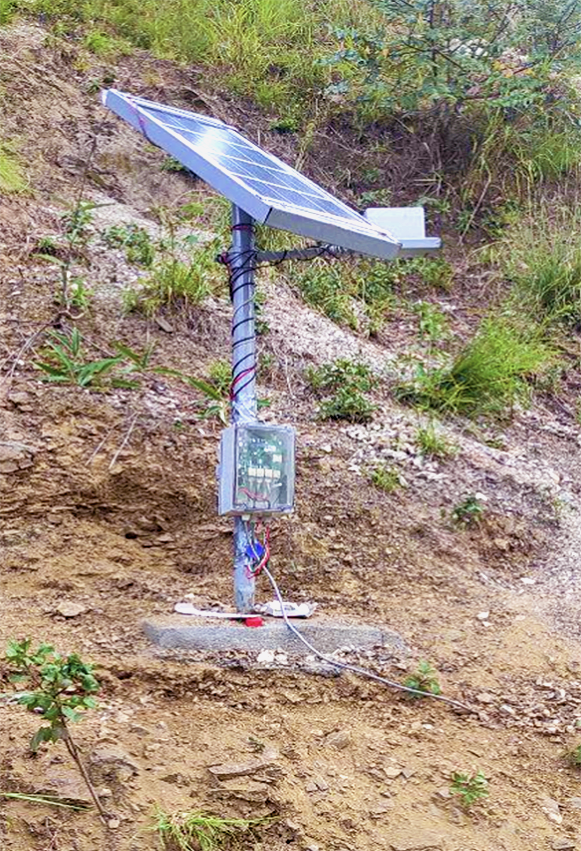
Landslides cause huge economic problems in India as well as in the world. Every year there is an economic loss of billions of dollars due to landslides in the world. In India, on average, 200 people lose their life due to landslides every year. If one could detect impending landslides in advance, then this detection may help save lives, and to a certain extent, it may also curb economic losses. Detection of landslide movements and associated landslides may require sensing technologies. Our research group developed the landslide monitoring system (LMS) to detect the movement in landslides.
My research centers on understanding how weather parameters and soil properties could trigger landslides. For collecting the weather and soil parameters, several LMSs are installed on real-world landslides in the Himalayan regions of India. These LMSs are providing real-time monitoring and collect the data on the cloud. The LMS records temperature, humidity, atmospheric pressure, rainfall, sunlight, soil moisture, and movement. The accelerometer sensor records the movement by a change in acceleration and gyroscope values. The system is connected to the mobile network and sends real-time monitoring data to the cloud every 10 minutes.
Landslide Monitoring
The Working of LMS
The following figure shows the working of the landslide monitoring and early warning system in real-world environments. As shown in the figure, the transmitter system is deployed on top of the active landslide, and the receiver system is deployed alongside the highway. Whenever slope movements start and cross a threshold value, the transmitter sends an alert signal to the receiver. Then the receiver switches on the blinker and hooters to warn the people and vehicular traffic on the highway. After every ten minutes, the transmitter sends the acquired data about slope movements and weather across the internet via the GSM mobile network. The cloud system on the Internet stores the data and generates alerts via SMSes using a dynamic threshold computed using a Gaussian distribution.

The System being Installed
The installation of the system on the real-world landslides.




The Kotrupi Landslide
On Sunday, 13th August 2017, a large landslide struck two buses at Kotrupi on National Highway 154, the road between Mandi and Pathankot in Himachal Pradesh, northern India. Forty-six people were buried alive under the landslide. In 2018, we deployed an LMS at the Kotrupi landslide for real-time monitoring. In the next monsoon, a tragedy was averted at Kotrupi due to rains and flash floods. The LMS issued a warning minutes before the disaster. The police stopped traffic before the flash flood and avoided a big disaster! About 4-5 vehicles carrying 12-15 people were saved at Kotrupi due to the early warning.
